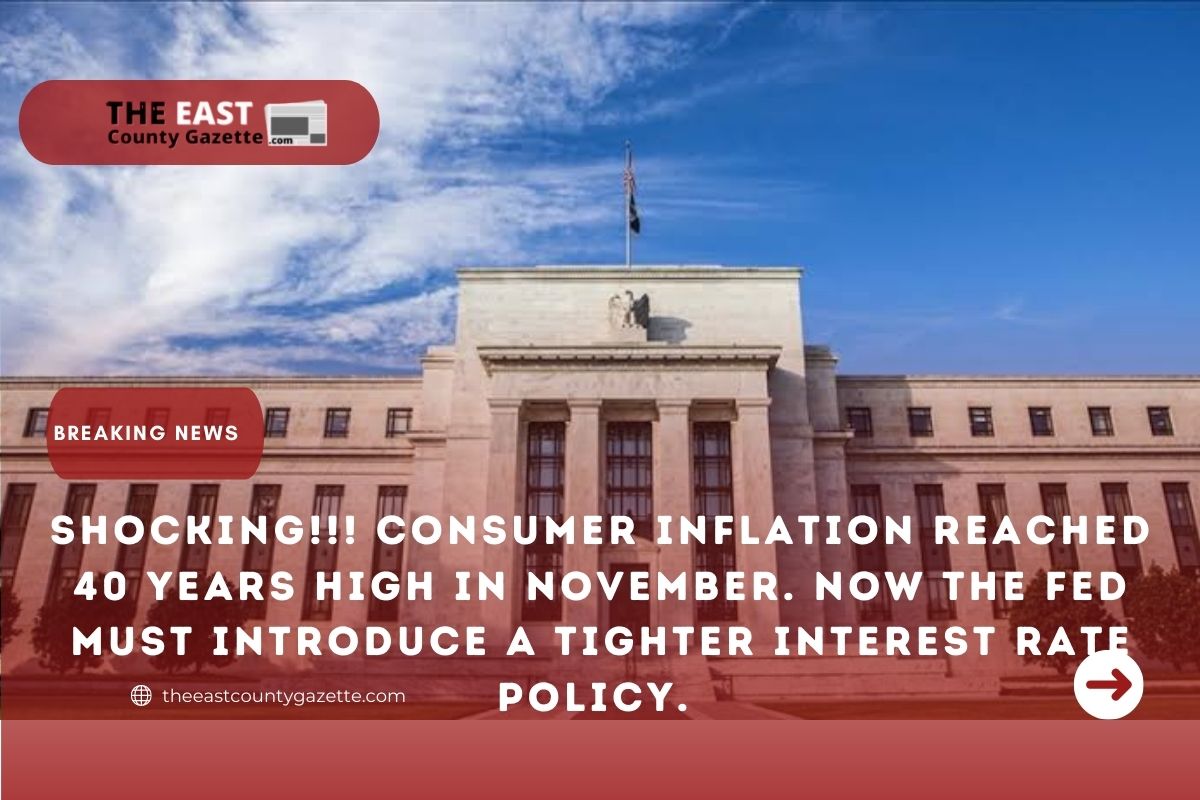Shocking!!! Consumer Inflation Reached 40 Years High in November. Now the Fed Set to Introduce a Tighter Interest Rate Policy
Inflation is the price increase. According to the November report, prices of used cars and trucks went up by 31.4 %, new cars went up by 11.1%. fast-food restaurants went up by 7.9%; Core Price Index (CPI) went up by 4.9% excluding the categories of food and energy. Gasoline rose by a 6.1% monthly rate.
With inflation on the rise (the highest in 40 years) and unemployment falling faster than expected, the Federal Reserve under Chair Jerome Powel will this week need to execute a sharp turn toward tighter interest-rate policies.
6.8% Inflation.
Against the speculation of the Fed that inflation with be transitory in 2021; and that unemployment will not fall fast enough; the combination is a sign of impending danger; consumer inflation has reached 6.8% in November, The unemployment rate has dropped by.6% from 4.8% to 4.2% in early November.
Lower Long Term Rates
According to an analysis by the Associated Press, the strategy by Fed Jerome Powel will be a double reduction in the rate of its monthly bond. The purchase of this bond is intended to lower long-term rates. A quick reduction in bond rates will also reduce some of the economic aid supplies by the Fed because of COVID.
Then the next line of action will be for Fed to forecast a two to three times raise in its benchmark short-term rate. The implication will be an increase in borrowing costs. Borrowing costs for mortgages, credit cards, and some business loans.
What is Jerome Powel Saying?
“Price increases have spread much more broadly in recent few months across the economy, and I think the risk of higher inflation has increased,” Powell said at a Senate committee hearing on Nov. 30.
Tighter credit rates.
If the Fed did not increase the rate which they have dragged for long, might cause an inflation surge and lead to another regression. Moving from ultra-low rates to tighter credit policies has its risks though; it can stifle consumer and business spending. This can weaken the economy and likely raise unemployment.
Read More: CDC Recommends Moderna and Pfizer Over J&J Vaccine Because of Blood Clots
Experts View
For now, some economists think that the Fed is unlikely to harm the economy anytime soon, even as it rapidly reverses its efforts to boost growth.
“They’re so far behind the curve, all they’re doing is taking their foot off the accelerator, rather than pressing on the brake,” said Paul Ashworth, chief U.S. economist for Capital Economics, a consulting firm.
Few economists expect inflation to remain as high as the nearly 7% annual pace it reached last month. Gas prices have already come off their peaks. Supply chain bottlenecks in some areas are gradually easing. And government stimulus payments, which helped spur a spike in spending that boosted inflation, aren’t likely to return.
Paul Volcke in 1979 inflation.
In the fall of 1979, inflation was running at more than 10 percent a year. Paul Volcker, the Fed chairman, believed that the usual procedure of gradual interest rate increases was inadequate. In the first place, So Volcker dramatically changed how monetary policy was implemented.
On October 6, 1979, the Federal Reserve announced that it would begin targeting bank reserves rather than the federal funds rate to curb inflation and “speculative excesses in financial, foreign exchange, and commodity markets.” This meant that the Fed would allow interest rates to vary much more widely and climb much higher in reaction to changes in demand for money and bank reserves.

